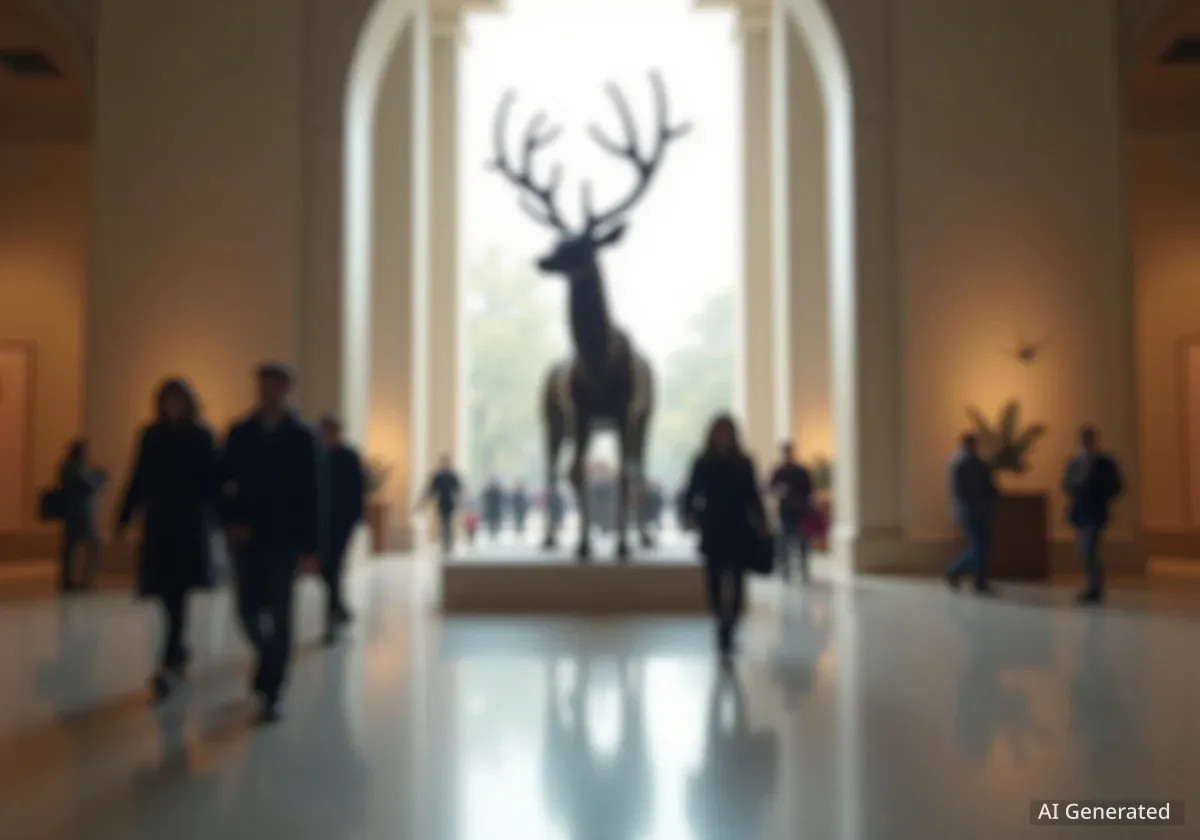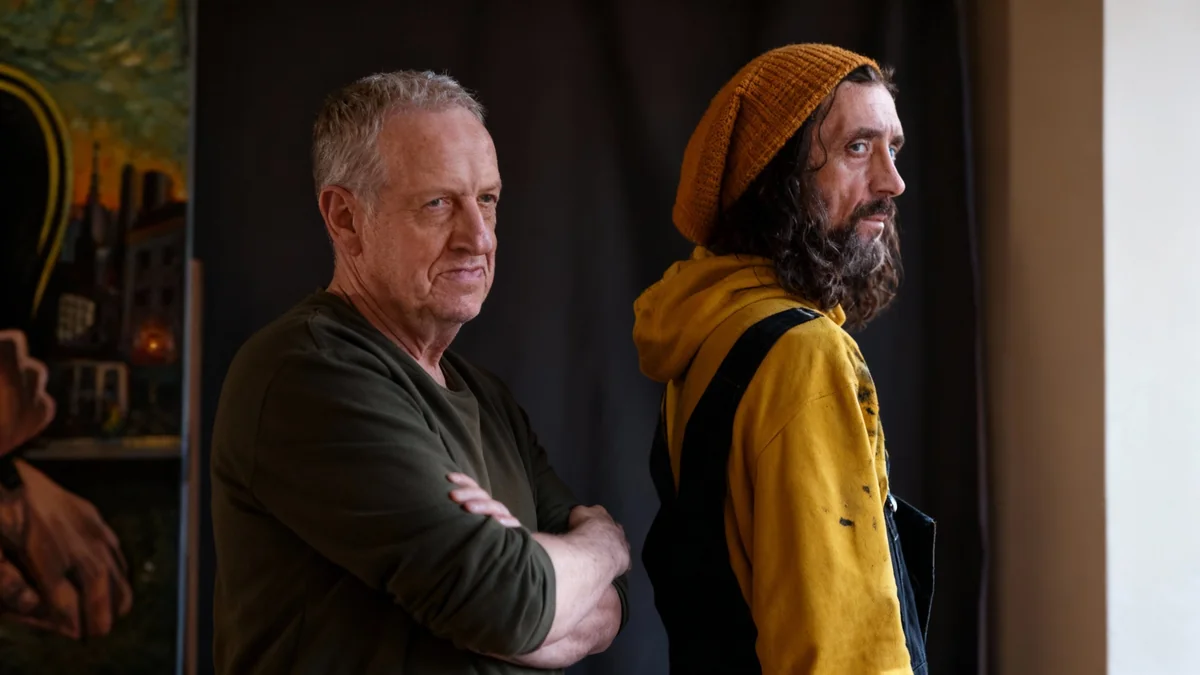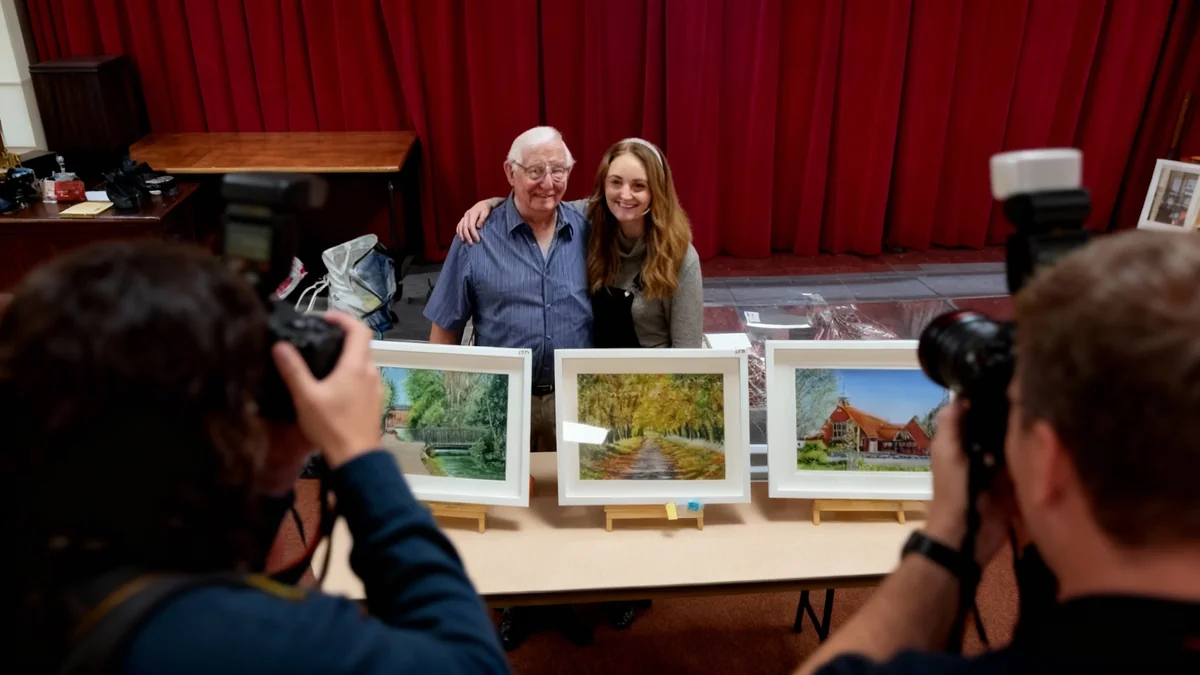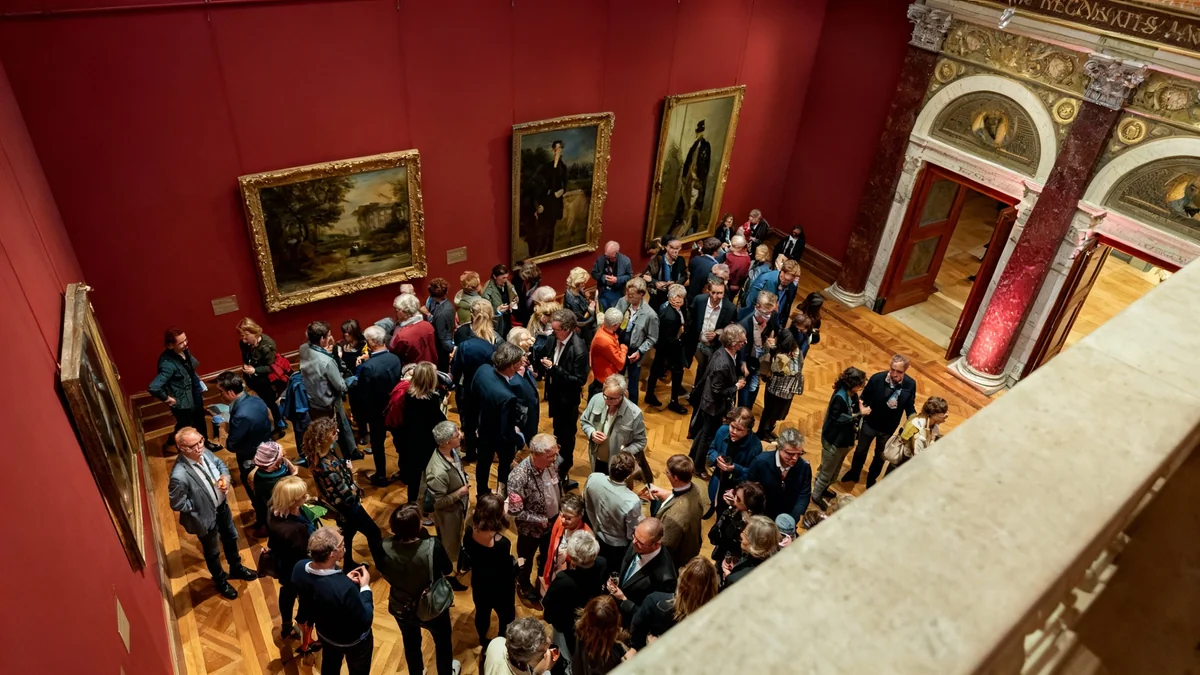Four large bronze sculptures by Indigenous artist Jeffrey Gibson now stand prominently outside the Metropolitan Museum of Art in New York City. Titled "The Animal That Therefore I Am," the installation features a deer, a coyote, a squirrel, and a hawk. These works draw inspiration from Gibson's early hide paintings and explore themes of animism and interconnectedness with the natural world.
Key Takeaways
- Jeffrey Gibson's new bronze sculptures are on view at the Metropolitan Museum of Art.
- The installation, "The Animal That Therefore I Am," features a deer, coyote, squirrel, and hawk.
- Gibson's work connects Indigenous kinship philosophies with contemporary art.
- The sculptures draw inspiration from the artist's early paintings on animal hides.
- The animals represent those found in both Central Park and the Hudson River Valley.
Gibson's Artistic Journey and Inspiration
Jeffrey Gibson's artistic path has often explored the relationship between humans and animals. His new Met commission, unveiled recently, reflects a significant turning point in his career. The artist discussed this shift during a talk introducing the works.
According to Gibson, his early paintings on brain-tanned elk hides in 2013 were pivotal. He noted that working with hides revealed natural imperfections like scars and hair follicles. This process constantly reminded him of the material's origin.
"Had I done these paintings on canvas, they could be read as geometric abstraction and formalism. [But] in this sense, you were reminded that there were 20 animals in the room with you, and I think that was such a turning point for me to understand how to shift the viewer rather than to shift what I was trying to accomplish."
This experience led him to consider how the medium itself could alter a viewer's perception, moving beyond purely abstract interpretations.
Connecting with Animism and Kinship
The concept of animism deeply influences Gibson's new sculptures. He highlighted that animism, the belief that all objects, places, and creatures possess a distinct spiritual essence, is a global theme in early cultures.
Artist's Background
Jeffrey Gibson is a member of the Mississippi Band of Choctaw Indians and of Cherokee descent. His work often integrates Indigenous visual culture with contemporary art forms.
Gibson has extensively discussed Indigenous kinship philosophies. These worldviews emphasize honoring all living beings as extensions of ourselves. This perspective views humanity as part of a larger, interconnected ecosystem, rather than at its apex.
The Influence of Jacques Derrida
The title of Gibson's installation, "The Animal That Therefore I Am," directly references a series of lectures by French philosopher Jacques Derrida from 1997. Derrida, known for his work in deconstructionism, explored humanity's relationship with animals in these lectures.
Derrida's Lectures
Jacques Derrida's lectures, delivered at the Centre Culturel International de Cerisy, were later published as a book. They challenged anthropocentric views, questioning humanity's self-proclaimed superiority over other species.
Initially, Derrida's focus on animals was considered unusual for a thinker of his stature. However, Gibson found profound resonance in Derrida's ideas.
Gibson explained that Derrida's writings critically examine humanity's position at the top of the hierarchy of living beings. Derrida argued for recognizing the inherent integrity of animals, their communities, communication methods, and societies.
Many animal societies, Gibson noted, demonstrate sustainability in ways that human societies often do not. This insight further strengthened his resolve to highlight these connections in his art.
Animals of Place: Central Park and Hudson Valley
The four animals chosen for the sculptures—deer, coyote, squirrel, and hawk—are not arbitrary. They represent species commonly found in two significant locations for Gibson: Central Park, where the Met is located, and the Hudson River Valley, where the artist resides.
Gibson moved upstate 13 years ago. He observes the same mountains and water daily. This close interaction with nature has shaped his perspective on coexistence.
He feels that humans often accommodate the animals in these natural spaces, rather than controlling them. This reflects a shift in understanding human presence within an existing ecosystem.
Sculpture Details
- Each sculpture is cast in bronze.
- They are presented with ceremonial garments.
- The installation stretches across the Met's facade.
Ceremonial Regalia and Transformation
Each bronze animal in Gibson's installation wears distinct ceremonial garments. These garments are inspired by Native American regalia, which holds deep cultural significance.
Gibson emphasized that regalia is not merely clothing. It is, in his words, "a body in and of itself." Regalia is infused with the power to transform the wearer, allowing them to embody a different being while it is worn.
This element adds another layer of meaning to the sculptures, suggesting a transformation of perception for those viewing them. The regalia helps to elevate the animals beyond mere representations, imbuing them with a ceremonial and spiritual presence.
A Painter's Approach to Sculpture
Despite creating three-dimensional objects, Gibson approaches his sculptures with the mindset of a painter. He considers them "four-sided paintings."
When developing the works, he examines them from multiple angles. This process helps him determine the visual interest and impact of each side. This painterly perspective ensures that the sculptures engage viewers from every vantage point along Fifth Avenue.
This installation follows other high-profile commissions for Gibson. He represented the US Pavilion at last year's Venice Biennale. Additionally, a major exhibition of his work is currently on view at MASS MoCA until next fall. These projects underscore his growing influence in the contemporary art world.
The sculptures invite passersby to pause and reflect on humanity's relationship with the animal kingdom. They encourage a deeper consideration of animism, kinship, and the integrity of all living beings.




